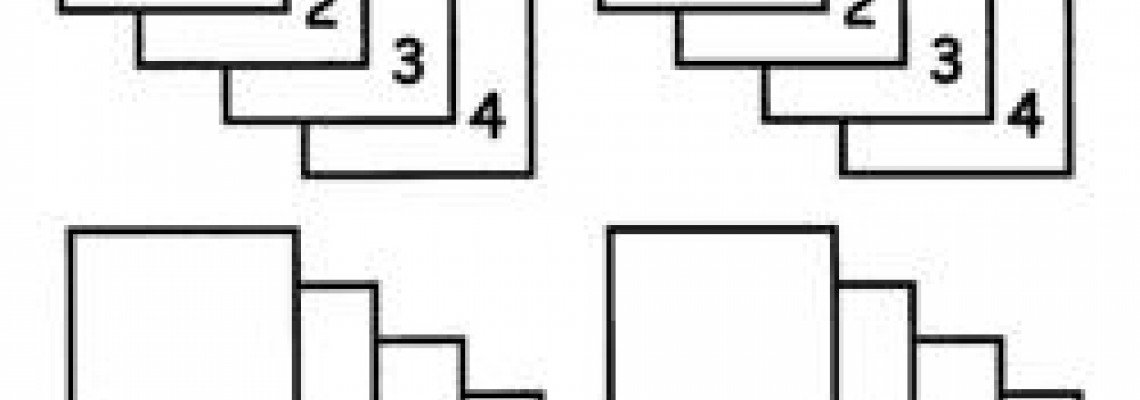
 En impression, le terme Assembler fait référence à la collecte et à l'agencement de feuilles individuelles ou d'autres composants imprimés en une séquence prédéterminée. Fondamentalement, le classement crée des ensembles logiques cohérents à partir de plusieurs parties.
En impression, le terme Assembler fait référence à la collecte et à l'agencement de feuilles individuelles ou d'autres composants imprimés en une séquence prédéterminée. Fondamentalement, le classement crée des ensembles logiques cohérents à partir de plusieurs parties.
Le diagramme A illustre quatre ensembles de documents qui ont été rassemblés. Le diagramme B illustre quatre ensembles de documents qui n'ont pas été rassemblés.
Exemples de documents assemblés
Un livre relié à court terme parfait exigerait que ses pages soient rassemblées dans l'ordre numérique avant de pouvoir être reliées. En outre, des formulaires et des chèques en plusieurs parties sont créés à partir de feuilles individuelles assemblées dans une séquence spécifique.
Gardez à l'esprit que les différentes parties d'un projet d'impression peuvent être assemblées sans avoir à être liées ou attachées ensemble. Par exemple, les paquets promotionnels - comme ceux utilisés pour les séminaires, les présentations de vente, les foires commerciales et à d'autres fins de marketing - sont souvent rassemblés à l'avance pour une distribution facile. De même, les documents pédagogiques imprimés peuvent être rassemblés dans un ordre particulier mais ne sont pas nécessairement liés ou attachés ensemble.
Plusieurs façons de rassembler des documents
 L'assemblage peut se produire lorsque les différents composants sont créés sur la presse à imprimer (assemblage en ligne) ou il peut se produire comme une étape distincte après que les composants ont été imprimés et retirés de la presse (assemblage hors ligne).
L'assemblage peut se produire lorsque les différents composants sont créés sur la presse à imprimer (assemblage en ligne) ou il peut se produire comme une étape distincte après que les composants ont été imprimés et retirés de la presse (assemblage hors ligne).
Selon la complexité du projet, le classement hors ligne peut être automatisé ou effectué comme une opération manuelle. Généralement, si les pièces d'un ensemble de documents ont des caractéristiques similaires, elles peuvent être assemblées avec un équipement automatisé.
Cependant, si les composants d'un ensemble de documents particulier sont différents - comme un catalogue de produits avec piqûre à cheval, deux brochures pliées en Z, une douzaine de bons de commande en plusieurs parties et une carte de visite - cela ne conviendrait pas pour une collation automatisée et nécessiterait un assemblage à la main.
L'assemblage fait souvent partie d'un programme de réalisation
D'après notre expérience, les programmes de réalisation impliquent souvent l'assemblage de documents imprimés. Qu'il s'agisse d'une promotion ponctuelle ou d'une campagne en cours, de nombreuses opérations d'assemblage et de mise en kit ont généralement un sous-composant assemblé. Cela est particulièrement vrai pour les programmes d'exécution qui nécessitent la distribution de documentation, de paquets d'informations, de dossiers ou de classeurs.








4 Commentaire(s)
e
e
e
e
Laisser un commentaire